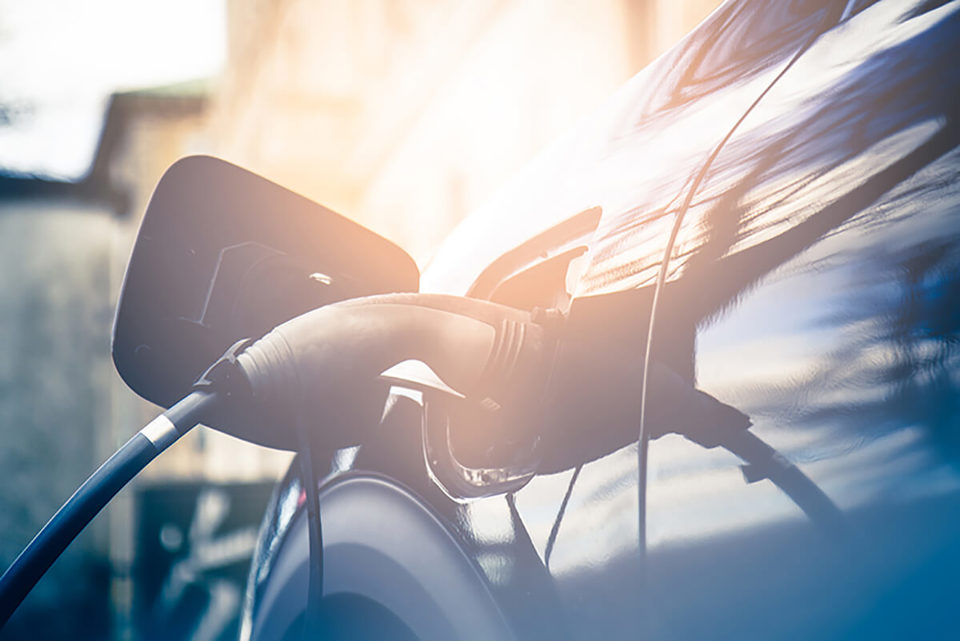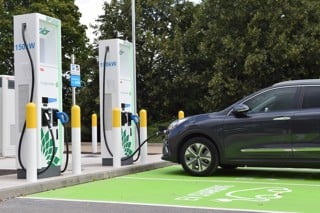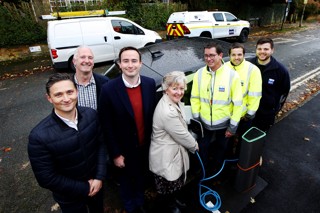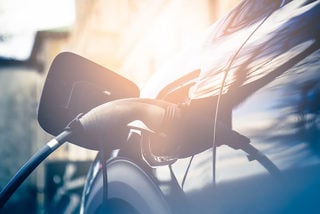The regions that have the most and fewest charge points per electric vehicle (EV) registered in that area have been revealed by Moneybarn.
Analysis by the vehicle finance provider shows Scotland is leading the way for EV charging infrastructure, with just 3.34 vehicles for every electric charging connector. This comes after a recent announcement that will see Scotland benefit from an additional £7.5 million boost to its electric vehicle infrastructure.
The North East of England (3.39) narrowly misses out on the top spot, coming second.
London (3.82) is in third place, while the West Midlands (17.4) is in last place, with a sizeable number of EVs per charging connector.
In the West Midlands, there are 1,450 chargepoints, which works out at 5.6% of UK total. In its attempt to expand the network for EVs, the West Midlands Combined Autority (WMCA) has come up with a collaborative strategy which will see constituent authorities working together to ensure an even and cost-effective roll out of charging points.
The strategy will see "the creation of a collectively owned Delivery Company (DelCo) that contracts with a private sector Operating Company (OpCo), which would deliver the charging infrastructure on-street and in publicly controlled off-street parking and other locations".
In terms of funding, it is believed that the WMCA could bid for funding from the Government Charging Infrastructure Investment Fund, with papers noting that as much as £200 million could be secured from this source, with an additional £200m in private funding helping to get the project moving.
Overall, the UK has started to see progress in its EV infrastructure, as the number of electric charging locations has surpassed the number of petrol stations.
Fleet News reported in August, 2019, there were 9,300 EV charging locations compared to 8,400 fuel stations.
There is now one electric charging location every 23.35 miles, compared with one petrol station every 29.39 miles.
However, only 23% of all connectors offer a rapid or ultra-rapid speed. This means a small number of charging devices provide a charging time between 20-40 minutes, which could disrupt motorists’ journeys, especially if they’re short on time.
Tim Schwarz, head of marketing at Moneybarn, said: “It’s great to see the UK continuing to develop its EV infrastructure ahead of its Road to Zero deadline.
“However, it’s clear areas like the West and East Midlands and the South East, need to improve their current EV facilities.
“More investment in rapid charging devices and connectors also needs to be made, so motorists feel comfortable driving long distances without worrying they may encounter travel delays.”
|
# |
Region |
No. of EVs per charging connector |
|
1 |
Scotland |
3.32 |
|
2 |
North East |
3.39 |
|
3 |
London |
3.79 |
|
4 |
Wales |
4.65 |
|
5 |
North West |
5.21 |
|
6 |
East Midlands |
6.95 |
|
7 |
Yorkshire & |
9.66 |
|
8 |
South West |
9.95 |
|
9 |
South East |
11.53 |
|
10 |
East |
14.89 |
|
11 |
West Midlands |
17.4 |
























Gordy - 13/01/2020 14:43
This is interesting information but doesn’t show the problem as it stands for all EV users. For example, some councils have placed rapid chargers (0-100 % charge in about 70 mins) in park-and-ride car parks? What’s wrong with this? Well, only 2 EVs can use this as they park, then probably go into a city to work. This blocks the £50,000 + charger for the whole day. The charger should have been placed within the city and then petrol / diesel cars would be displaced out to the park and ride car park. It’s not just about the quantity of chargers, it’s about intelligently placing them for future needs. It’s far better to have a “charging terminal” of 20-30 fast chargers at a dedicated site (under a pylon) on the outskirts of a town/city, with toilets/coffee shop/Wi-fi than to force chargers onto existing fuel filling station forecourts where you’ll get less than 10 cars per hour charging flat to full and they’ll be there for so long the thousands of motorists who used to use the forecourt will dry up and the forecourt will go out of business. Come on, let’s have some joined up thinking and grow the charge network sensibly from now!